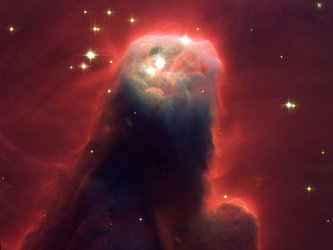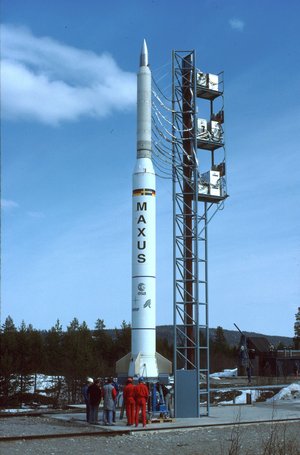1 May
1996: On 1 May 1996, a chance encounter between Ulysses, the joint ESA/NASA spacecraft, and a comet's tail led scientists to conclude that comet tails extend much further than anyone supposed.
On that date, Ulysses flew through the tail of Comet Hyakutake whose nucleus was more than 3.5 AU away at the time (1 AU equals the Sun-Earth distance, which is 150 million kilometres). This made it the longest comet tail ever recorded.
1958: On 1 May 1958, the discovery of the powerful Van Allen radiation belts that surround Earth was published in the Washington Evening Star, a newspaper in the USA.
The article covered the report made by their discoverer James Van Allen to the joint sysmposium of the National Academy of Sciences and the American Physical Society in Washington DC. He used data from the Explorer I and Pioneer III space probes of Earth's magnetosphere region to reveal the existence of radiation belts - concentrations of electrically charged particles.
Van Allen was the principal investigator on 23 other American space probes.

1949: On 1 May 1949, Gerard Kuiper discovered Nereid, the second satellite of Neptune, the outermost and the third largest of Neptune's known satellites.
Nereid's orbit is the most highly eccentric of any planet or satellite in the Solar System; its distance from Neptune varies from 1 353 600 to 9 623 700 kilometres. Nereid's odd orbit indicates that it may be a captured asteroid. The name, Nereid refers to the sea nymphs who dwell in the Mediterranean Sea, the 50 daughters of Nereus and Doris.
Kuiper, a Dutch-American astronomer (1905-1973) also studied the surface of the Moon; discovered Miranda, a moon of Uranus; and found an atmosphere on Titan, a moon of Saturn.
One of the aims of the NASA/ESA Cassini-Huygens mission is to explore Titan's atmosphere.















 Germany
Germany
 Austria
Austria
 Belgium
Belgium
 Denmark
Denmark
 Spain
Spain
 Estonia
Estonia
 Finland
Finland
 France
France
 Greece
Greece
 Hungary
Hungary
 Ireland
Ireland
 Italy
Italy
 Luxembourg
Luxembourg
 Norway
Norway
 The Netherlands
The Netherlands
 Poland
Poland
 Portugal
Portugal
 Czechia
Czechia
 Romania
Romania
 United Kingdom
United Kingdom
 Slovenia
Slovenia
 Sweden
Sweden
 Switzerland
Switzerland


































